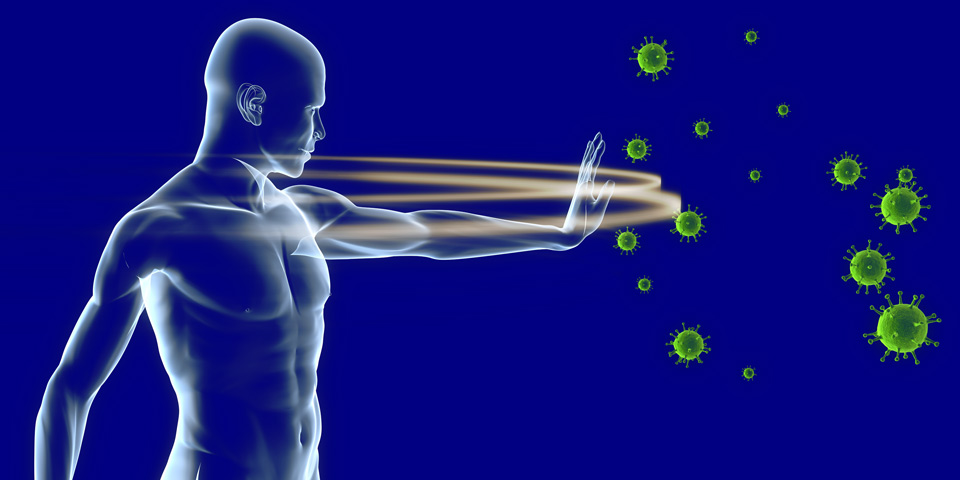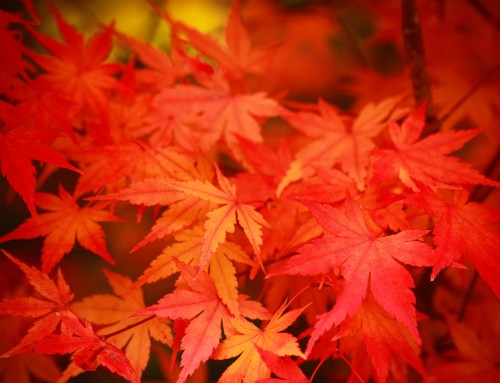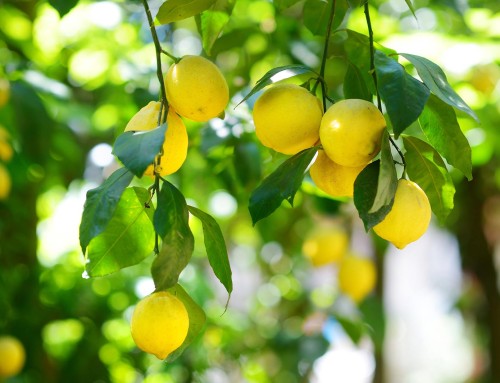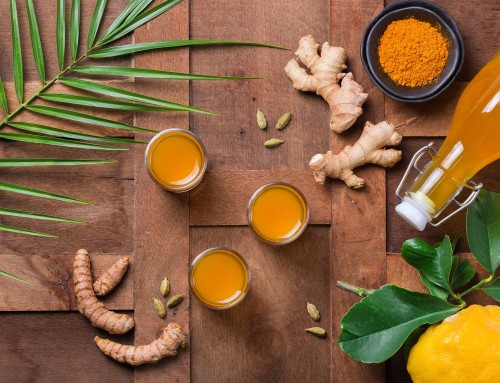
The Ayurvedic theory of immunity is called Beej-bhumi, which literally translates as “seed and land”. The body is seen as the fertile land in which infections or harmful “bugs” can grow.
If our body is out of balance, and full of Ama – the toxic by-products that result from incomplete digestion – viruses and harmful bacteria will find fertile soil for their growth.
If digestion is strong, a substance called Ojas – the product of complete and balanced digestion – will predominate in our body. Unlike Ama, Ojas has a strengthening effect on your immune system and when it predominates, the seeds of infection find it hard to take hold.
Immunity is affected by seasonal changes
According to Ayurveda, seasonal changes, say from autumn to winter or winter to spring, tend to have a weakening effect on our body and we become more susceptible to infections, such as respiratory problems.
The digestive and metabolic systems function differently in each season. As a result, during the transition between one season and another, Agni (digestive fire) can fluctuate dramatically. This can lead to incomplete digestion and to the build-up of partially digested food or Ama in our tissues.
If we neglect to change our diet and routine, and don’t follow the appropriate Ayurvedic seasonal guidelines, Ama becomes more toxic and effectively becomes ready for the growth of diseases. This is why respiratory illnesses and allergies abound in the autumn and early spring.
In the early spring, there is an added factor. As spring progresses the weather starts to warm up and any Ama that has accumulated during winter, starts to become mobile. This mobile Ama starts flooding our Shrotas (body channels and micro-channels) and this in turn overloads our immune system. If our immune system is not that strong, our body becomes a fertile ground for viruses, harmful bacteria and allergens.
Panchakarma purification therapy
 During seasons transitions, Maharishi AyurVeda recommends you take the highly effective detox and purification treatments that are collectively called Panchakarma.
During seasons transitions, Maharishi AyurVeda recommends you take the highly effective detox and purification treatments that are collectively called Panchakarma.
Panchakarma therapy is probably the quickest and most effective way to remove both the water-soluble and the oil-soluble toxins. It consists of:
- a variety of ayurvedic massages to soften up the cells and tissues, to help them expelling the toxins gathered in them
- heat treatments, including herbalised steam baths, to open up the Shrota channels and help move the toxic Ama into the circulatory system
- nasal and intestinal cleansing treatments, to fully expel toxins from the body, so they are not just re-absorbed.
At the same time as giving your body the most thorough detox available, Panchakarma also strengthens Agni, or digestive fire. This ensures that Ama has much less chance to accumulate over the following months.
Maharishi Panchakarma treatments are performed at Maharishi Ayurveda Health Centres under the supervision of a trained practitioner, who will tailor the treatment according to your needs.
Seasonal home purification
Whether you are able enjoy regularly Panchakarma therapy or not, it is good to follow an Ayurvedic regimen at home to help remove Ama and prevent its build-up. Try the following cleansing routine during each seasonal change:
- Eat a light diet for a few weeks while the weather is changing, to help burn away rather than accumulate Ama. The main sign that Ama is reducing is that you start getting back a genuine feeling of hunger.
- Eat warm, light, nourishing foods, such as soups or light meals of mildly-spiced vegetables and lentils. Include some light grains such as quinoa, couscous and millet.
- Get to bed early and get sufficient sleep at night.
- Be careful not to overdo things and get proper rest.
- Drink plenty of warm fluids, particularly hot or warm filtered water.
- Take daily walks, or other exercise suitable for your body-type, such as swimming.
- Daily yoga and pranayama (yogic breathing exercises) are particularly good for promoting digestion. They both enliven Prana (life-force). Like a river in flood that washes away accumulated mud, the force of Prana helps to move Ama out of your body.
 Ways to burn away toxic Ama
Ways to burn away toxic Ama
Loss of appetite, or a heavy and dull feeling in the hours after a meal, indicate a low digestive fire or Agni. These symptoms also indicate a build-up of Ama.
To enhance your digestive fire and burn away those toxins, try the following:
- Cook your food with immune-supporting spices such as cumin, fennel, coriander, turmeric, ginger and black pepper.
- Vata, Pitta and Kapha spice mixes, and other spice blends, are available from Maharishi AyurVeda Products. These can be used according to the season and according to your Prakriti – the inherent balance of Vata, Pitta and Kapha Doshas that make up your body-type.
- Take Digest Plus herbal supplement with each meal to enhance digestion.
- Take Herbal Cleanse at night to help cleanse your body of toxic waste and support regular elimination.
- Detox, Detox Pitta (MA1663) and Triphala Rose are part of a range of herbal supplements that are very effective in purifying your body of Ama and are useful at the change of seasons.
Finally, it’s important to always avoid generating Ama in the first place.
- Only eat a meal when you are genuinely hungry. If you are hungry enough to be satisfied with a dry crust of bread, that is genuine hunger.
- Eat until you are satisfied, but not full. This allows space for your digestive processes to do their work.
- Avoid leftovers, processed foods, cold foods or drinks, and heavy foods, such as fried foods.
- Avoid vegetables from the nightshade family, such as potatoes, tomatoes, eggplant, and sweet peppers, as these create Ama.
Boost your natural immunity through diet
Winter happens to be the best season to build up your immune system and support and nurture your body. During this season you should eat nourishing and warm foods and avoid fasting.
Winter is also the most effective time to take Maharishi Amrit Kalash to nourish and regenerate your mind and body.
It is important to eat light, warm foods that are cooked with the resistance-enhancing spice blends previously mentioned. Avoid eating or drinking anything cold. Cold foods and drinks fill your body with the cold Guna or quality. Eating cold foods during cold weather will reduce your bodily heat and your digestive fire, leading to a build-up of Ama.
Avoid heavy deserts and sweets, such as chocolate, as these are difficult to digest. Start each day with stewed apple for breakfast, cooked with spices such as cinnamon and cardamom. Try adding sultanas or raisins to the pot.
 From September to December follow a Vata-balancing diet. Eat all six tastes in a meal – sweet, sour, salty, pungent, bitter and astringent – but favour the sweet, sour, and salty tastes, as these help balance Vata Dosha. Vata-balancing foods include:
From September to December follow a Vata-balancing diet. Eat all six tastes in a meal – sweet, sour, salty, pungent, bitter and astringent – but favour the sweet, sour, and salty tastes, as these help balance Vata Dosha. Vata-balancing foods include:
- Grains such as rice and couscous.
- Sweet, juicy fruits such as cooked apples or pears.
- Squashes, courgettes, and asparagus.
- Light, easily digestible proteins such as panir (a freshly made curd cheese), lassi (a yoghurt drink diluted with water that aids digestion).
- Vegetable proteins such as mung dhal.
Asparagus is especially good for enhancing the immune system, though it can be hard to get during winter.
 Lifestyle tips that support immunity
Lifestyle tips that support immunity
Warm bath each day
A warm bath each day helps keep your body warm, open its pores, and regulate your body’s internal thermostat. Warm baths are especially important in both the Vata season (September to December) and the Kapha season (January to May).
Daily Ayurvedic massage
Although daily oil massage is recommended throughout the year, during the Vata season it is especially important. Massage opens the Shrotas or body channels, stimulates the digestive fire, helps remove toxic Ama, and balances the three Doshas. Because the skin is one of the main seats of Vata, massage is especially soothing for Vata Dosha.
 Oil massage is a vital means in supporting immunity and preventing respiratory problems. It is important though to note though that massage is not recommended if you already have a cough or other respiratory problems, as it will tend to push the Ama deeper into your system. Also women should avoid full-body massage during menstruation.
Oil massage is a vital means in supporting immunity and preventing respiratory problems. It is important though to note though that massage is not recommended if you already have a cough or other respiratory problems, as it will tend to push the Ama deeper into your system. Also women should avoid full-body massage during menstruation.
Vata, Pitta and Kapha Massage Oils are herbalised oils that allow the oil-soluble ingredients to be absorbed into your skin along with the oil. Both the herbs and the oils help balance either Vata, Pitta or Kapha Dosha. Each can be used according to the season and according to your body-type
 Sleep, the great healer
Sleep, the great healer
Adequate sleep is especially important during the Vata season, as it balances the fast, lively, moving qualities of Vata. Sleep is also essential for all of us in any season as it supports immunity and resistance to disease.
Herbal preparations that help with sleep include:
- Blissful Sleep Basic helps support refreshing sleep and is recommended for any body-type or sleep disorder. It is recommended to combine Blissful Sleep Basic with Dosha-specific Blissful Sleep formulas.
- If you have trouble falling asleep this indicates a Vata imbalance and you should also take Blissful Sleep Vata along with Blissful Sleep Basic.
- If you wake frequently, especially between 2am and 4am (possibly with feelings of energy), this indicates a Pitta disorder and you should also take Blissful Sleep Pitta.
- If you sleep fully throughout the night but still feel tired when you wake up, there is a Kapha disorder so also take Blissful Sleep Kapha.
Exercise to boost your Agni
Exercise is highly effective way to enhance your Agni and burn away toxic Ama.
It’s important to choose the right exercise for your body-type and for the season.
- Daily walks and yoga postures are good for balancing all the Doshas and especially suit Vata types
- As they are naturally heavier and more robust, to stay healthy more vigorous daily exercise is required by those with a Kapha body-type.
- Water has a natural cooling quality, so swimming is especially balancing for those with more Pitta in their system.
- Exercise is especially important during Kapha season as this is when toxins that build up during winter start to flood your body. Exercise helps to boost Agni and an enhanced Agni with help remove an excess of toxic Ama.
Health promoting herbs now available from Maharishi AyurVeda
Sniffle Free Tea
Drink a warm, resistance-enhancing tea such as Sniffle Free Tea, twice a day before or after meals. The herbs in this thermogenic tea help to quickly balance Kapha Dosha.
Inhalation Oil
If you feel congested, use Inhalation Oil to help keep your sinuses clear.
Breathe Easy and Cold Season Defence
Breathe Easy tablets and Cold Season Defence tablets help enhance your natural balance and resistance to disease, and can be taken during the winter season to help prevent respiratory problems.
Cold Season Defence offers nutritional support to your body. It helps to maintain the balance of fluid and mucus in your lungs and sinuses. It also removes Ama and Shleshma (a toxin that forms when excess Kapha become mixed with Ama) from your lungs. Cold Season Defence cleanses the micro-circulatory channels when they become clogged up by Ama and Shleshma. It helps remove the toxins that weaken your resistance.
Breathe Easy particularly targets the upper respiratory system. It also supports your body’s natural resistance to the cold. Breathe Easy tablets help keep the channels, clear, so that Shleshma naturally begins to drain from your body. Breathe Easy strengthens your Agni, balances the production of moisture and mucus, supports resistance to cold weather, and enhances the bioavailability and circulation of important nutrients.
 Improving balance is the key
Improving balance is the key
So often the language of battle is used when it comes to health issues, as if disease is something we have to fight with and destroy. Rather than disease, Ayurveda sees lack of balance within different aspects of our body as the real problem that needs to be addressed. This is a more subtle approach to health, but one which promises fewer side-effects and one which is gaining greater understanding and acceptance.
All of the above mentioned herbal preparations help improve balance in our body. An Ayurvedic practitioner will first aim at detecting where the underlying imbalances are and what their nature is. Through dietary, seasonal and lifestyle advice, as well as through specific herbal preparations, the practitioner will then aim at improving our balance and at supporting our immunity and natural resistance. Perfect health is the ultimate aim of all Ayurvedic strategies and this will be gained when body, mind and consciousness are fully developed and attuned.
Health Guide download
Download and print out our easy-to-read health guide on 8 Ayurvedic ways to boost your natural immunity.





